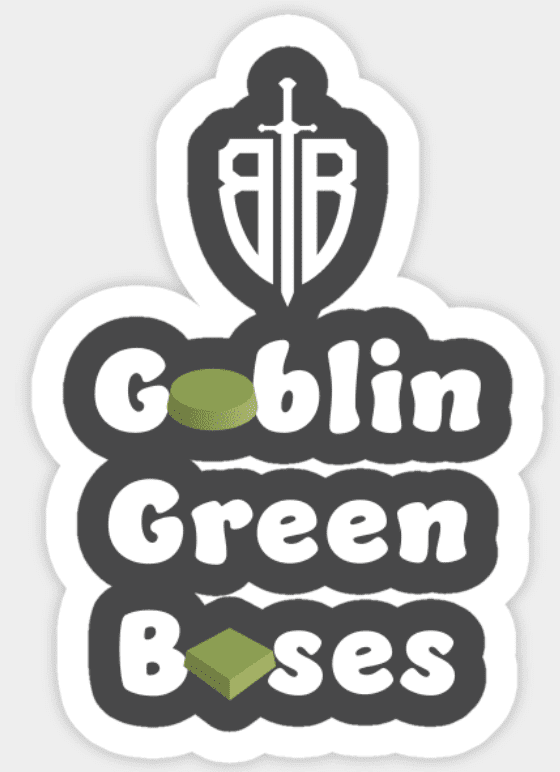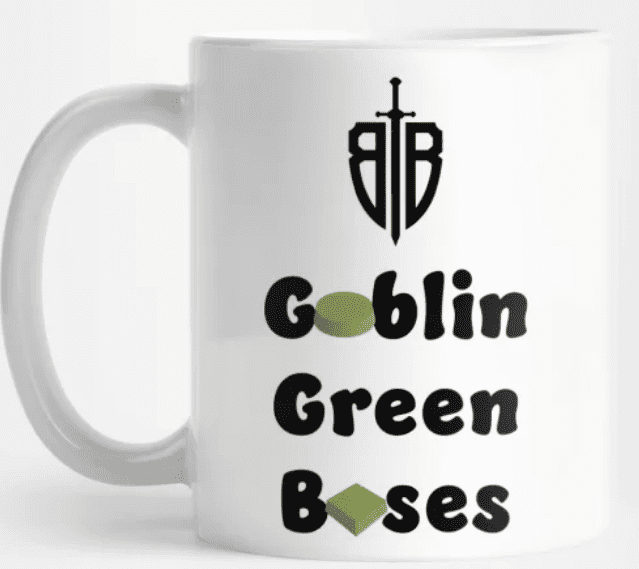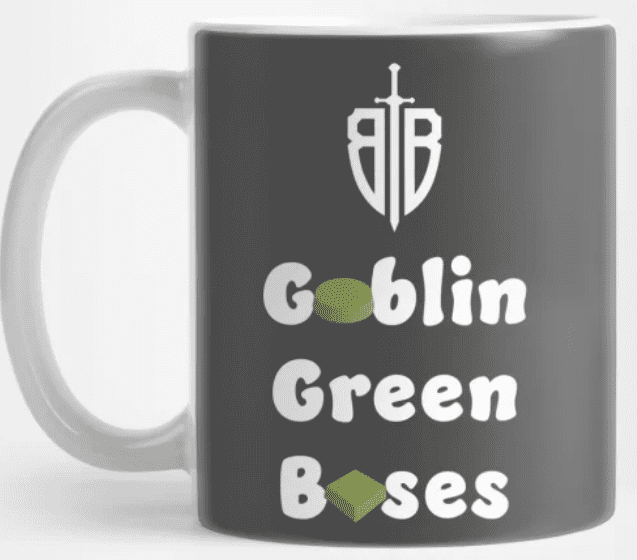Want to walk around town sporting an obscure 90s tabletop miniature hobby reference that no one will ever understand? Then you need some Goblin Green Bases-themed merch.
Check out our Goblin Green Bases merch on TeePublic
On there, you’ll find t-shirts, hoodies, caps, mugs, stickers, magnets and more. In the infinitely rare chance you bump into someone as stuck in the past as you are, it’ll probably be the finest moment you’ve had this side of the millennium.






Check out our Goblin Green Bases merch on TeePublic
Goblin Green Bases: A Brief Background
Goblin Green bases were a hallmark of Games Workshop miniatures, particularly in the early to mid-90s. This distinct basing style involved painting the bases of miniatures with a bright, saturated green colour known as Goblin Green. The technique was popularized through Games Workshop’s own painting team, known as ‘Eavy Metal, and was prominently featured in White Dwarf magazine, their flagship publication. Here’s a deeper look into the significance and appeal of Goblin Green bases:
Historical Context and Technique
- Standardization: In the early 90s, the hobby of miniature painting was still developing standardized techniques and styles. Goblin Green bases provided a uniform look that helped tie together various armies and models in photos and in play.
- Materials and Methods: Typically, the base was first painted with Goblin Green paint. To add texture, a mix of PVA glue and sand was often applied before painting. This created a simple but effective grass-like appearance.
- Photographic Consistency: For White Dwarf magazine, consistency in miniature presentation was crucial. Goblin Green bases ensured that regardless of the model or its primary colour scheme, the bases would create a cohesive visual theme across various articles and battle reports.
Appeal and Aesthetic
- Vivid and Bold: The 90s were characterized by bright, bold, and saturated colours in many aspects of culture, from fashion to graphic design. Goblin Green bases matched this trend, making the miniatures visually striking and easily noticeable.
- Contrast and Highlight: The bright green bases provided a stark contrast to the often dark and gritty miniatures of the Warhammer universes. This contrast helped the models stand out, making their intricate details more noticeable.
- Nostalgia and Community Identity: Many hobbyists who grew up with White Dwarf magazine and early Warhammer models have a deep nostalgia for the Goblin Green base. It became a symbol of the early days of the hobby, creating a sense of community identity among long-time fans.
- Complementary Colors: During the 90s, Warhammer models were often painted in saturated, high-contrast colours. The bright greens, reds, blues, and yellows of the miniatures were complemented by the equally vibrant Goblin Green bases. This created a cohesive and appealing aesthetic that resonated well with the visual tastes of the time.
Evolution and Legacy
As the hobby evolved, so did basing techniques. The introduction of more sophisticated basing materials and techniques, such as resin bases, tufts, and advanced texturing methods, gradually led to a decline in the use of Goblin Green. Modern miniatures often feature more realistic and varied basing styles, reflecting diverse environments and adding to the overall narrative of the models.
However, Goblin Green bases still hold a place of fondness for many veteran hobbyists. Some continue to use the style for its nostalgic value, while others incorporate elements of it into more modern basing techniques as a nod to the past. The bright green base remains an iconic and instantly recognizable part of Warhammer’s rich history, symbolizing a formative era in miniature painting and gaming.
